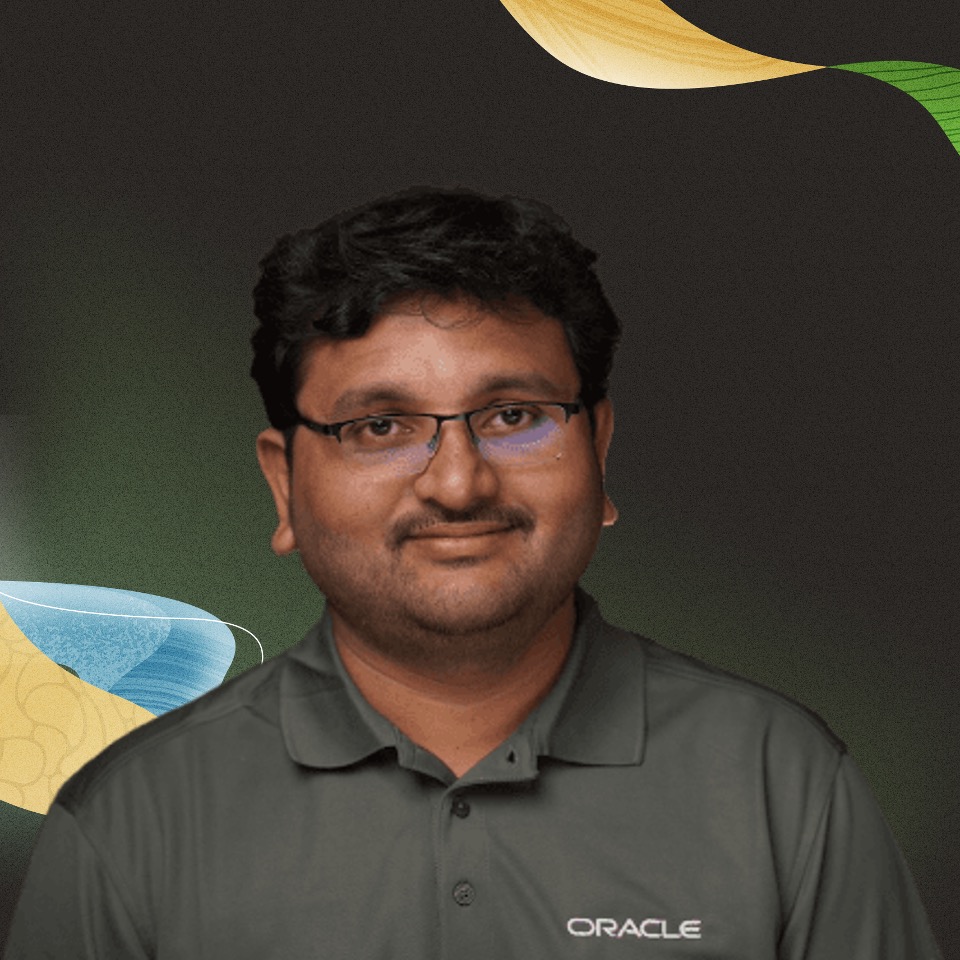We are excited to announce the native integration of Oracle Full Stack Disaster Recovery (DR) with OCI MySQL HeatWave. With this integration, organizations can better protect their critical applications running in OCI. This integration combines Full Stack DR’s advanced resilience and fast recovery with the high performance and analytics power of MySQL HeatWave. By adding MySQL HeatWave DB systems to a Full Stack DR protection group and automating the recovery process, you can minimize downtime and keep your business running—whether during planned activities, unexpected disruptions, or regular DR drills.
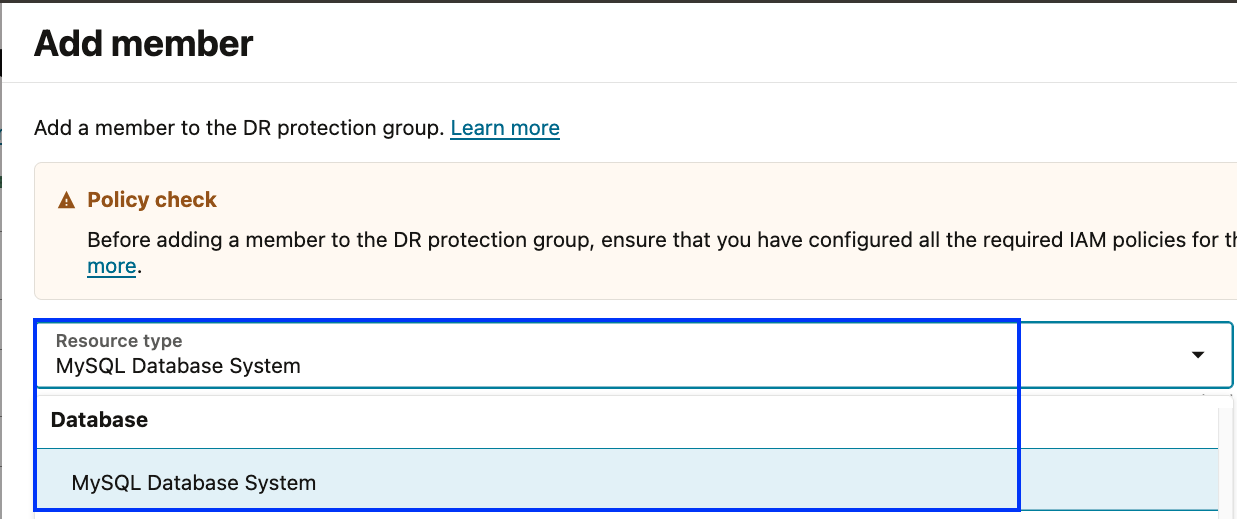
Key Business and Technical Benefits
This new feature helps organisations move from manual, script-based disaster recovery (DR) processes for MySQL DB systems to native Full Stack DR integration. This brings major improvements in efficiency and reliability.
- Unified Management: MySQL DB Systems can now be managed together with compute, storage, OKE cluster, and networking in Full Stack DR plans, making administration easier.
- Built-in Intelligence: Native integration adds automated pre-checks and error handling, increasing the reliability of disaster recovery.
- Enterprise Reliability: Full Stack DR includes logging, monitoring, and audit trails to ensure transparency and compliance.
- Faster Recovery: Automated recovery reduces the Recovery Time Objective (RTO) for systems that depend on MySQL DB systems.
- Operational Efficiency: Removes the need for manual coordination between teams, ensuring consistent DR operations across different workloads.
OCI Full Stack DR integration with MySQL DB system
This integration applies to customers using MySQL Inbound replication and running MySQL DB systems in an active-passive architecture. Before adding MySQL DB systems, users must first complete the prerequisites listed below. For complete details, refer to the OCI Full Stack DR documentation.
Set Up Networking
- Create Dynamic Routing Gateways (DRGs) in both regions and establish remote peering.
- Update Virtual Cloud Network (VCN) route tables to direct traffic through DRGs.
- Adjust security lists and Network Security Groups (NSGs) to allow replication traffic.
Deploy DB Systems
- Set up a MySQL HeatWave DB system in the source region and create a replication user.
- Back up the primary database and copy it to the target region using the Copy Backup feature.
- Restore the backup in the target region to create a standby DB system and set it to Read Only.
Configure Replication
- Set up the replication channel with the source DB hostname, port, and replication user credentials.
- Regularly check replication status and run data consistency checks to ensure integrity.
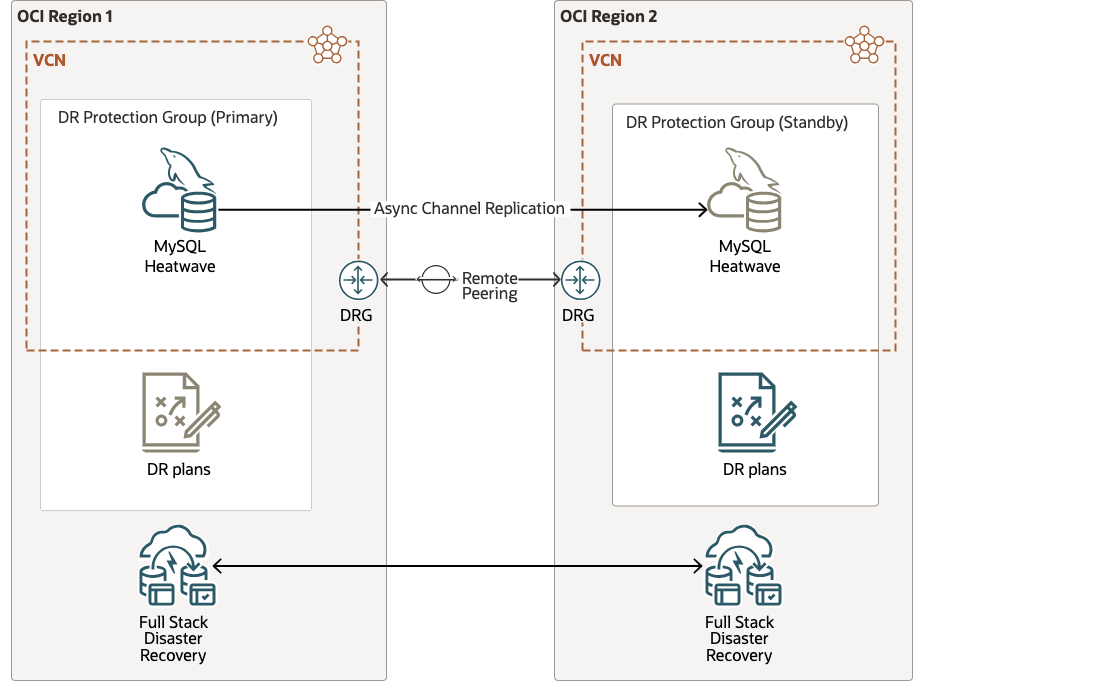
From Member Addition to DR Plan Execution
Once the DR protection groups are created and peered with the right roles across OCI regions.
1. Add the MySQL DB system as a member in the respective DR protection groups. The primary DB system should be added to the Primary DR protection group, and the standby DB system should be added to the Standby DR protection group.
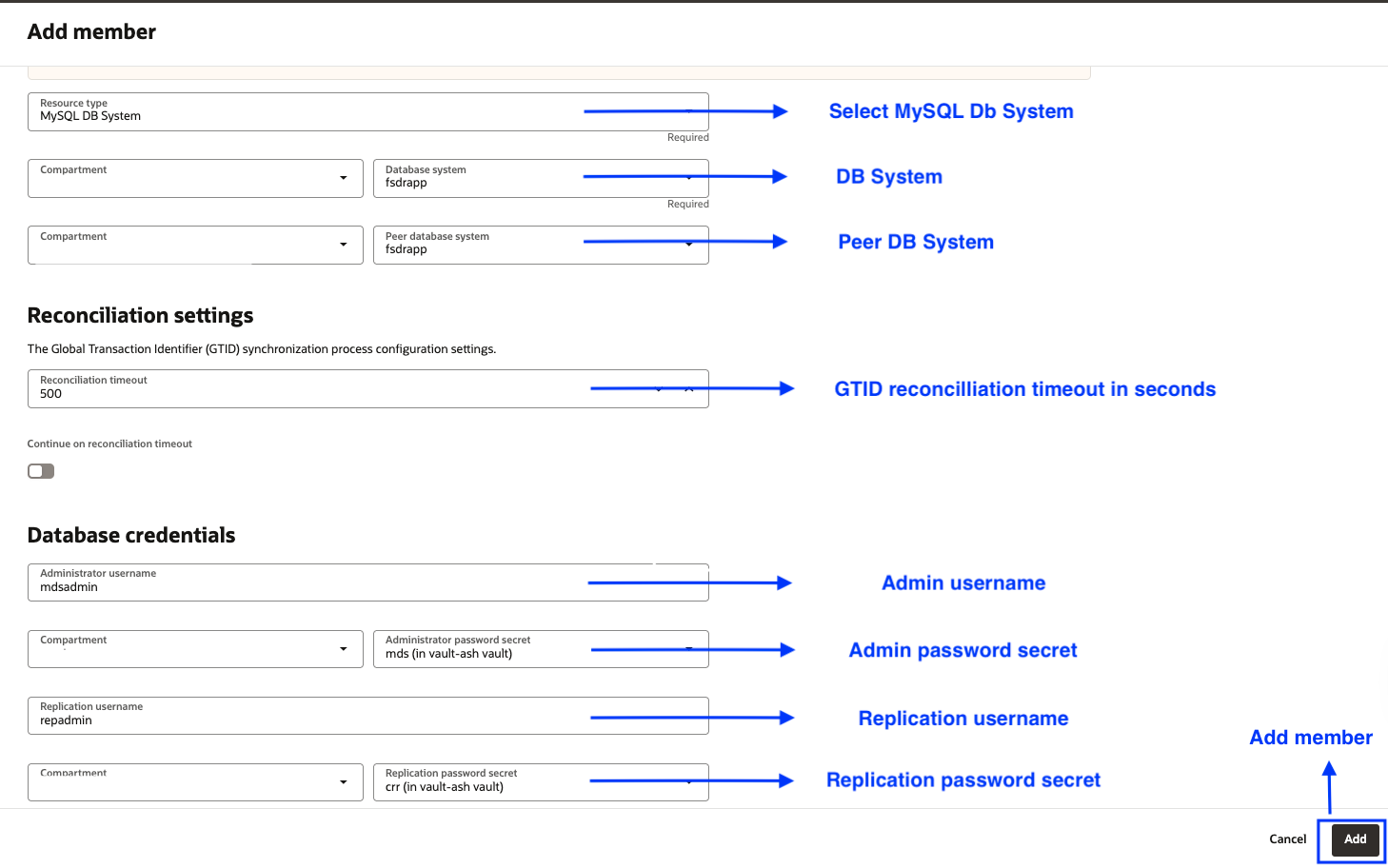
2. Create DR plans in the Standby DR protection group region.
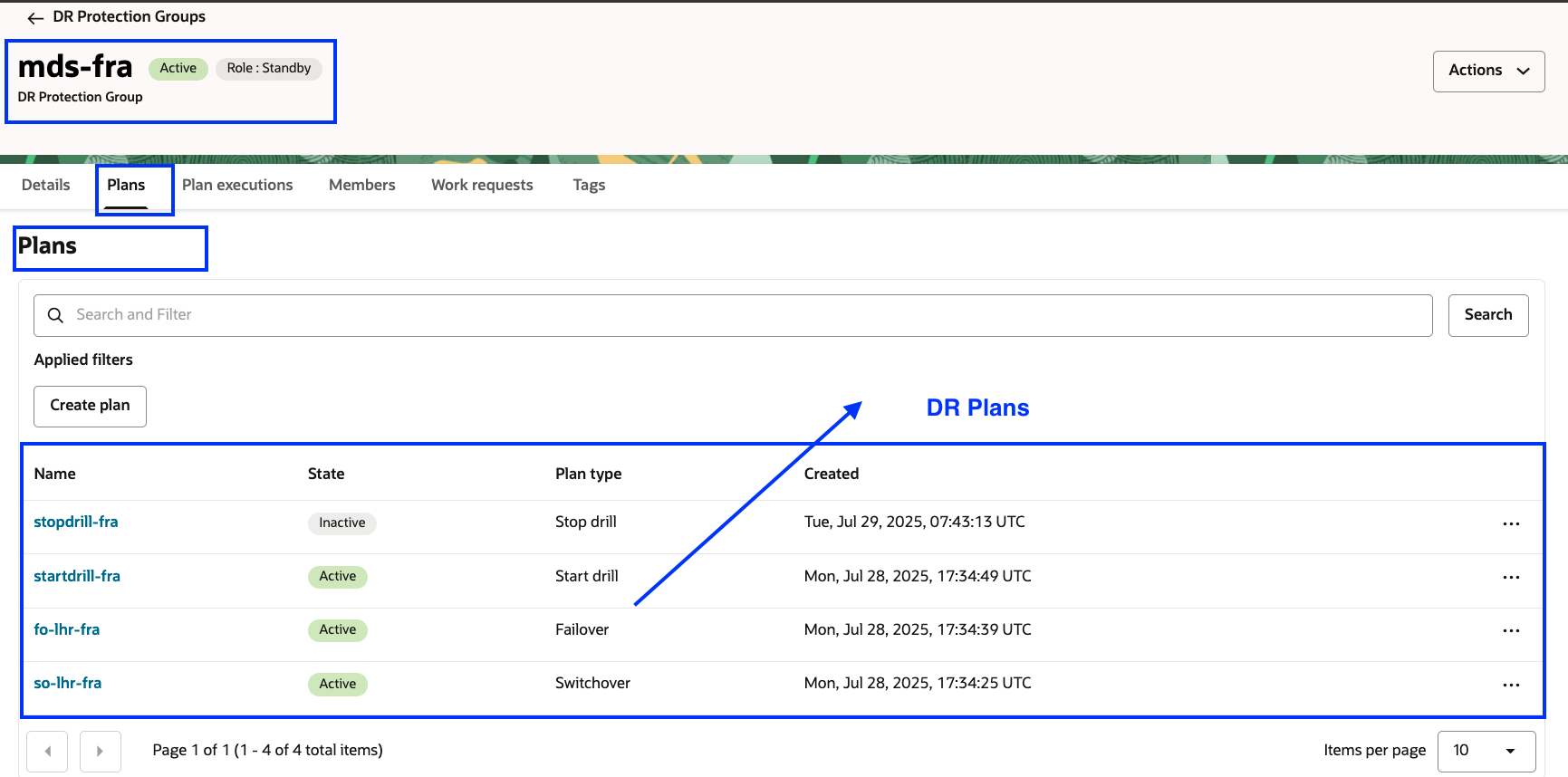
3. Full Stack DR automatically creates built-in plan groups for the supported plan types for the MySQL DB systems.
| DR Plan | Plan groups | Type | Description |
| Switchover | HeatWave MySQL DB System – Switchover | Built-in | Switchover to the MySQL DB System |
| Failover | HeatWave MySQL DB System – Failover | Built-in | Failover the MySQL DB System |
| Start drill | HeatWave MySQL DB System – Start drill | Built-in | Create a clone of the MySQL DB System |
| Stop drill | HeatWave MySQL DB System – Stop drill | Built-in | Terminate the clone of the MySQL DB System |
4. A Switchover plan includes steps for prechecks and the database system switchover. Other DR plans also have plan groups with their own steps. If a protection group has multiple MySQL DB systems, the recovery steps for all of them run in parallel. This means role changes happen at the same time, which helps reduce the Recovery Time Objective (RTO) for business systems.
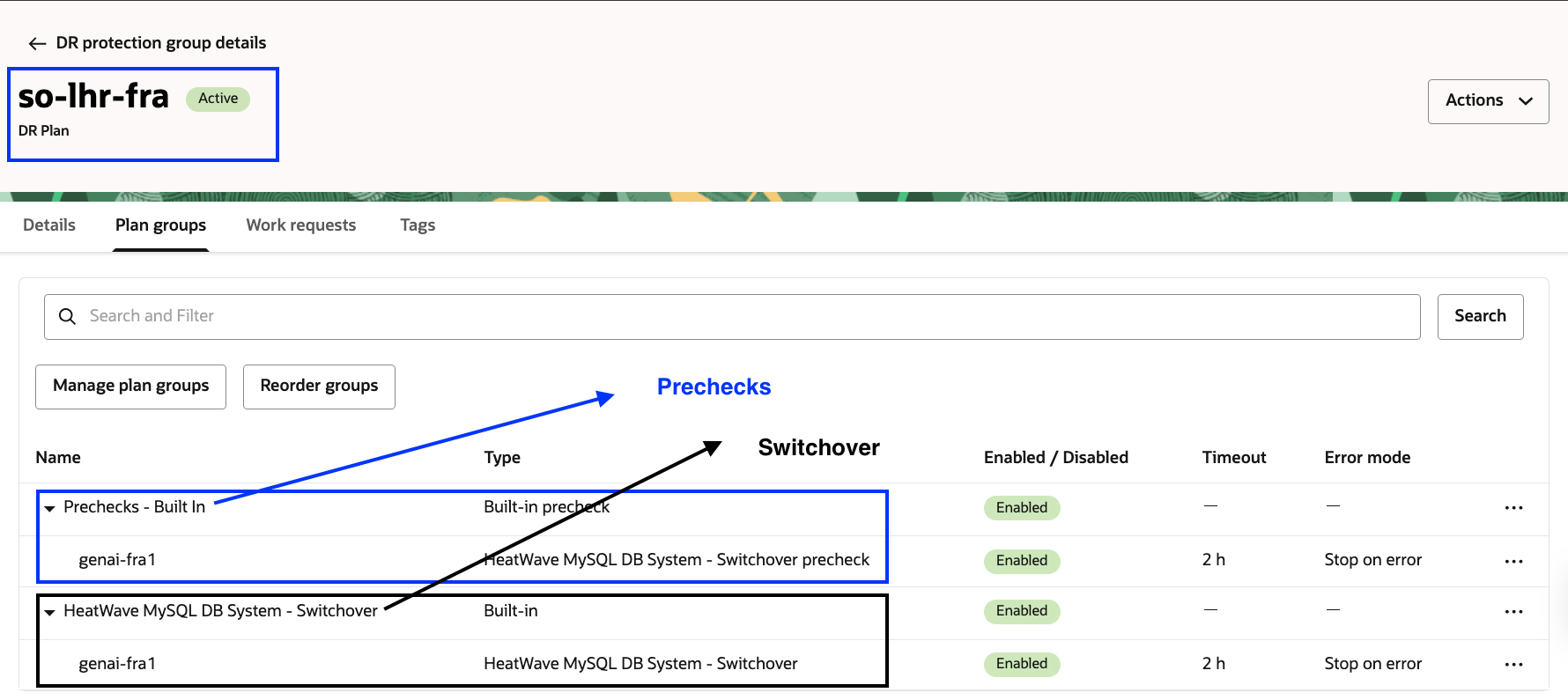
5. Once the plans are created, you can run prechecks and execute the DR plan of your choice. During execution, the system shows the duration of each step, and you can view or download logs, retry, or skip the plan executions. All DR operations can be managed in one place, giving you a single-pane-of-glass experience.
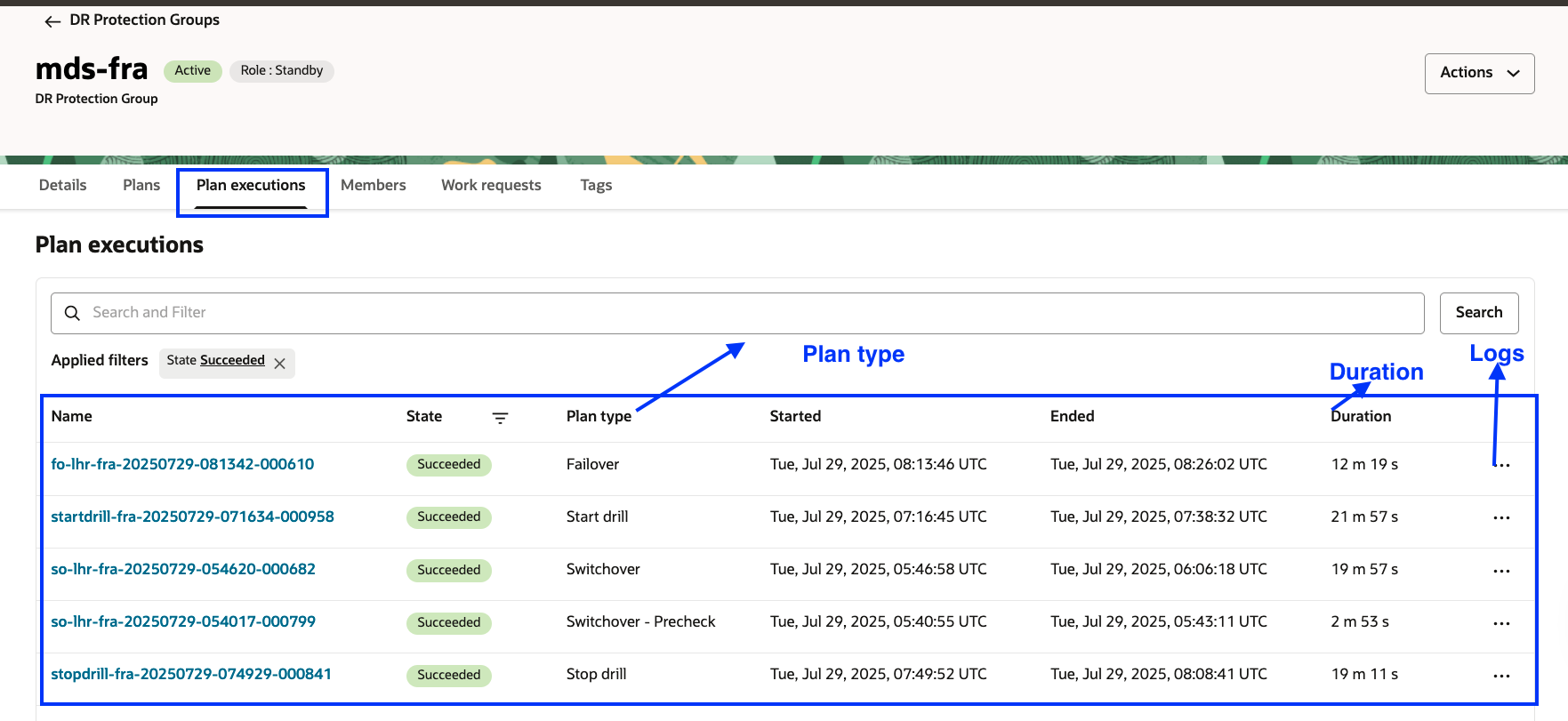
For a detailed step-by-step tutorial, check out: Automate Disaster Recovery Plans with Channel Replication for MySQL HeatWave Using OCI Full Stack Disaster Recovery
Conclusion
In summary, integrating Oracle Full Stack Disaster Recovery with OCI MySQL HeatWave gives organisations a strong and automated way to protect critical applications running in OCI. It improves efficiency, shortens recovery times, and ensures business continuity during both planned and unexpected events. With this integration, businesses can handle disaster recovery more confidently while maintaining resilience and reliability.
Want to know more?
If you haven’t seen OCI Full Stack Disaster Recovery in action yet, ask your Oracle Cloud Infrastructure account team to set up a demonstration today. For more information, including documentation, pricing, customer success stories, videos, tutorials and hands-on labs, visit Full Stack Disaster Recovery.
Visit the following links to learn how to add your existing MySQL DB systems to Full Stack DR for fully automated, end-to-end recovery.

